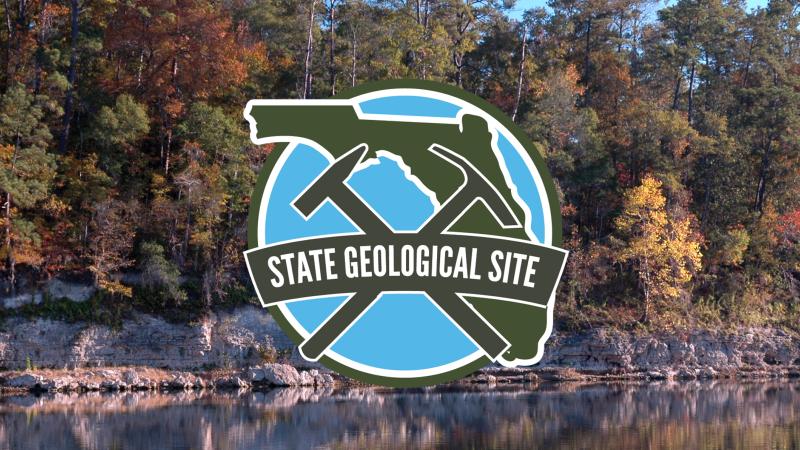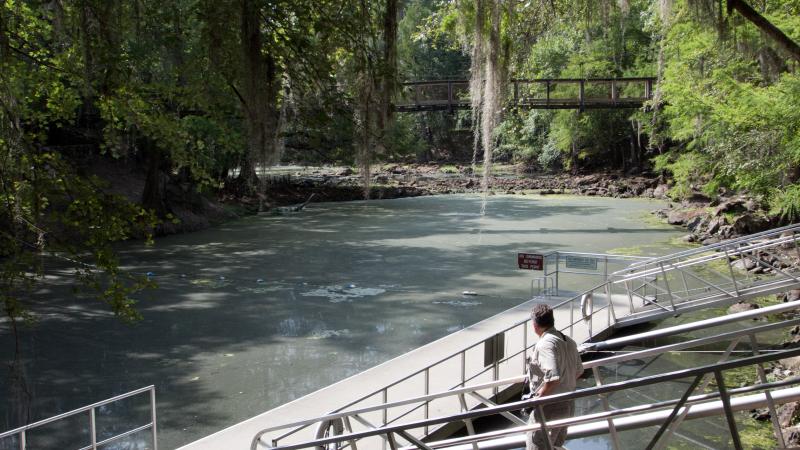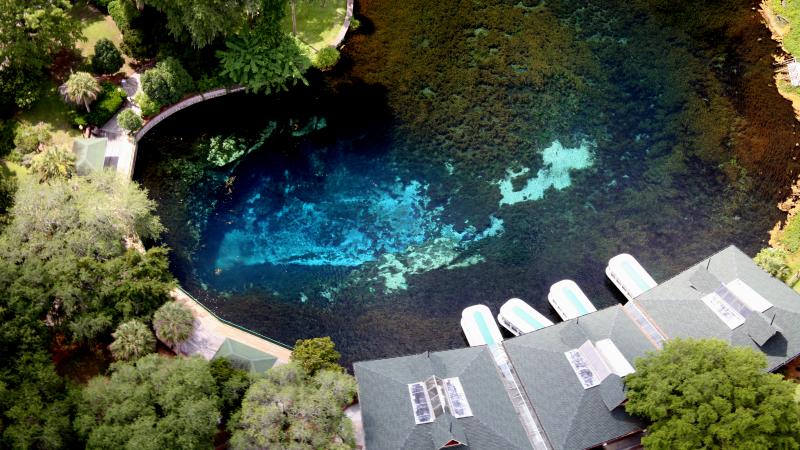Geology in Wes Skiles Peacock Springs State Park
A 733-acre state park located on the Suwannee River's easter side in Suwannee Count, just between Live Oak and Mayo, Florida.

Wes Skiles Peacock Springs State Park is a 733-acre state park located on the Suwannee River’s eastern side in Suwannee County, just between Live Oak and Mayo, Florida. The wildness that epitomizes North Florida and its natural beauty is on full display. Originally named Peacock Springs State Park, the Nature Conservancy purchased the land in 1985, and the State acquired it in 1993. The park’s name was amended in 2011 to honor the late Wes Skiles for his documentary filmmaking, springs advocacy, and contributions to cave exploration. Through his efforts and those like him, places as beautiful as Wes Skiles Peacock Springs State Park are protected and preserved landmarks for all to enjoy and learn about Florida’s water resources.
Wes Skiles Peacock Springs (WSPS) State Park offers visitors opportunities like picnicking, bird watching, and hiking. The 1.2-mile trail traces a network of underground cave passages, guiding hikers to the surface expressions of karst features that characterize the geology hidden below. These features include two major springs, a spring run, and six sinkholes. The calm turquoise water invites swimmers, snorkelers, and divers to explore exposures of an ancient carbonate platform altered over time through continued deposition, compaction, lithification, and later, dissolution via a process known as chemical weathering, resulting in a fine display of a submerged karst landscape.
Florida boasts over 1,000 freshwater springs, categorized by “magnitudes,” or how much water they discharge. Wes Skiles Peacock Springs State Park’s two main springs, Peacock and Bonnet, are listed historically as second magnitude springs (FGS Bulletin 66), meaning they can discharge up to 100 cubic feet of water per second. The water issuing from these springs flows from the subsurface and onto land because of the artesian pressure in the underlying aquifer. Peacock and Bonnet springs vent into their respective pools, and each pool feeds a quarter-mile stretch of slough, or low-lying wetland area. Peacock Slough receives groundwater contributions from three spring vents (Peacock I, Peacock II, and Peacock III). During high water conditions, the slough takes on the characteristics of a shallow spring run, creating a stream of flowing spring water. Peacock Slough connects these spring-fed wetlands south of Peacock and Bonnet Springs and continues south for another 1.3 miles before entering the Suwannee River.
Guests can see groundwater exposed in other karst features along the trail and elsewhere within the park, including sinkholes and windows. These features provide a glimpse into the underlying aquifer where specific visual cues, such as clarity and algae, can indicate water quality. All of the features you see in the park are connected in some form or fashion, whether on a microscopic scale via interconnected pore spaces or on a megascopic scale such as caves and conduits. At WSPS State Park, some of the most spectacular geologic features are the megascopic karst features like the springs, sinks, windows, and their associated cave system. Orange Grove Sink (a karst window) and Peacock I Spring are the only two points that provide entry into the 6.25-mile submerged cave system. This cave system is comprised of an extensive network of passages and rooms. For a certified cave diver or technical diver, these passages allow exploration of what many consider Florida’s last “untouched” frontier. Divers provide scientists with critical information that enables us to understand local hydrogeology and the aquifer’s transmissivity, interconnectivity, and health.
The geology of the area surrounding the park is characterized by limestone either at or very near the land surface. The limestone visible in the park is the formally recognized Ocala Limestone, deposited between 37.8 and 33.9 million years ago as Florida was a developing carbonate platform. The framework that defines this lithostratigraphic unit and its ancient marine origins is best observed along trails where rocks are exposed at the surface or in the numerous submerged landscapes within the park. Where limestone is not exposed at the surface, it is overlain by a thin layer of younger, unconsolidated, and undifferentiated quartz sand and clay. With limestone very near the surface, this spatial relationship allows the slightly acidic rainwater to interact with the rock. This water-rock interaction slowly eats away the limestone, which increases the porosity and contributes to increasing karst development. Areas like this are essential because they allow the Floridan aquifer system to recharge or replenish its waters.
Wes Skiles Peacock Springs State Park provides a unique view into one of Florida’s geologic wonders and the opportunity to enjoy some of our most prized water resources. Whether you are an avid enthusiast or just looking to get outdoors, this park will surely give you an experience you’ll enjoy.


